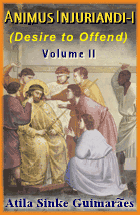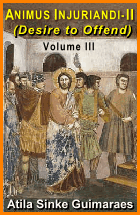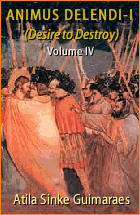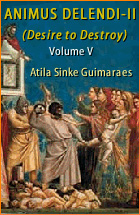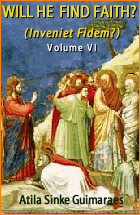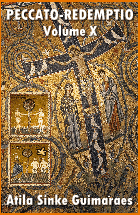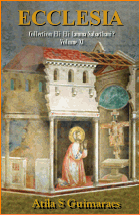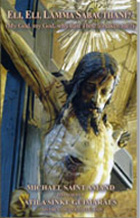NEWS: July 30, 2025
 |
 |
 |
 |
 |
 |
 |
Bird’s Eye View of the News

LEO XIV’S MISSION OF SYNTHESIS –
As the end of Leo XIV’s third month approaches – August 8 – and he continues to be difficult to interpret, some readers are asking my opinion about him. I am pleased to answer. I will respond to this question trying to avoid platitudes.
/bev308_Pre.jpg) Independent of personal data regarding Robert Prevost, which I will analyze further down, let me first situate some general needs of the Conciliar Church to see whether or not the new Pope can play a role in providing for them.
Independent of personal data regarding Robert Prevost, which I will analyze further down, let me first situate some general needs of the Conciliar Church to see whether or not the new Pope can play a role in providing for them.
After 12 years of bold and even violent governance by Francis who pushed the ideal of Progressivism forward at a martial pace, what are the present needs of the Conciliar Church?
First, however, let me highlight some landmarks of this martial pace:
/bev308_Dic.jpg) I observed many progressivist Bishops who were not following Francis, and who were deferring the enforcement of his furious measures against conservatives and traditionalists, waiting for him to pass away. I knew of priests who had been praying for a long time “for Pope Francis to go to Heaven soon…” an ironic euphemism. These Bishops and priests did not identify themselves with the radical line chosen by Francis and – a practical but decisive factor – did not want to lose face with their “moderate” donors and grassroots.
I observed many progressivist Bishops who were not following Francis, and who were deferring the enforcement of his furious measures against conservatives and traditionalists, waiting for him to pass away. I knew of priests who had been praying for a long time “for Pope Francis to go to Heaven soon…” an ironic euphemism. These Bishops and priests did not identify themselves with the radical line chosen by Francis and – a practical but decisive factor – did not want to lose face with their “moderate” donors and grassroots.
In my opinion, what the Conciliar Church needs now, more than anything else, is to have a long period to digest the progressivist “conquests” that Francis won for it. The aim is not to deny what he did. It is to “reinterpret” it under a more moderate light in order to make the average Catholic assimilate his legacy in small and less repulsive doses.
The goal of this process is to avoid a potential split inside the Church, whose probability was increasing by the end of Francis’ pontificate and whose allure was becoming ever greater. In other words, if the Conciliar Church were to continue along at the same pace of Francis, the mass of its followers would separate themselves from its leadership.
So, it is absolutely necessary for the Conciliar Church to bring back that considerable middle-of-the-road parcel of public opinion that Francis alienated, be they moderate or conservative progressivists, be they conciliatory traditionalists.
How can this be done, without giving the impression of taking a side in a fight between the Bergoglio wing versus the Ratzinger wing – thesis versus antithesis? It consists in creating a synthesis of the two. It consists in, so to speak, reading Francis with Benedict’s lenses.
To do this, it is necessary to have a good number of “reinterpretations” of Francis decisions based on new “revelations.” So, let us suppose this new report: “Cardinal X revealed recently that in a private conversation with Francis, the latter expressed his love for the traditionalists saying that he prayed for them every day.” Or this one: “The esteem of Francis for the Mass ad orientem can be measured by the praise he made for it at a meeting in the Sistine Chapel on the Feast of the Annunciation in 2019.” Or, this one: “Did you know that Francis met regularly at Santa Marta with this or that head of traditionalist organizations and enjoyed their company very much?”
These “revelations” that I am imagining regarding the Mass and traditionalists could be made for each point in Francis’s radical agenda in order to “reinterpret” him and lead the people to the conclusion that “he was not so bad.”
The mission of Pope Prevost
Up to this point in this article, I have depicted the needs of Progressivism and pointed to a way to repair the damages without losing the gains.
/bev308_Rat.jpg) It is my conviction that those Cardinals who elected the present Pope – or the ones who control them – had an analogous concern regarding the needs of the Conciliar Church. I also believe that they chose Card. Robert Prevost to fulfill this mission.
It is my conviction that those Cardinals who elected the present Pope – or the ones who control them – had an analogous concern regarding the needs of the Conciliar Church. I also believe that they chose Card. Robert Prevost to fulfill this mission.
Now, what points allow me to believe that Leo XIV was the man chosen to fulfill these goals and apply this method?
If we consider that a synthesis can be made of some elements of the thesis and of the antithesis, here are some elements for the answers:
Let us continue to observe his apparently contradictory moves to see if this criterion continues to apply.

/bev308_Pre.jpg)
Robert Prevost, a quite common man, ready to obey those who actually direct the Conciliar Church
After 12 years of bold and even violent governance by Francis who pushed the ideal of Progressivism forward at a martial pace, what are the present needs of the Conciliar Church?
First, however, let me highlight some landmarks of this martial pace:
- We have seen the Pachamama worshiped at the Vatican Gardens and placed in front of the
Altar of the Confession at St. Peter’s Basilica;
- We have seen Francis promoting “a banquet for the poor and marginalized” at the Paul VI Hall; its highlights were the 120 man-to-female transgender prostitutes he invited, having two of them sitting at the papal table and chatting with him;
- We have seen the Conciliar Church entering into official “dialogue” with Freemasonry (here and
here);
- We have seen the overt attack against Capitalism and the warm support of the most radical revolutionary movements of Liberation Theology;
- We have seen the issuing of the Abu Dhabi document, which is a prolegomenon to the Panreligion;
- We have seen in Laudato si the Church identifying itself, as never before, with the ecological revolutionary hoax of “global warming” and all its tribalist consequences;
- We have seen a systematic destruction of the traditional religious life in seminaries, convents and monasteries, and the derision of the Latin Mass, which he called a “nostalgic disease.”
/bev308_Dic.jpg)
Pope Francis became increasingly authoritarian....
In my opinion, what the Conciliar Church needs now, more than anything else, is to have a long period to digest the progressivist “conquests” that Francis won for it. The aim is not to deny what he did. It is to “reinterpret” it under a more moderate light in order to make the average Catholic assimilate his legacy in small and less repulsive doses.
The goal of this process is to avoid a potential split inside the Church, whose probability was increasing by the end of Francis’ pontificate and whose allure was becoming ever greater. In other words, if the Conciliar Church were to continue along at the same pace of Francis, the mass of its followers would separate themselves from its leadership.
So, it is absolutely necessary for the Conciliar Church to bring back that considerable middle-of-the-road parcel of public opinion that Francis alienated, be they moderate or conservative progressivists, be they conciliatory traditionalists.
How can this be done, without giving the impression of taking a side in a fight between the Bergoglio wing versus the Ratzinger wing – thesis versus antithesis? It consists in creating a synthesis of the two. It consists in, so to speak, reading Francis with Benedict’s lenses.
To do this, it is necessary to have a good number of “reinterpretations” of Francis decisions based on new “revelations.” So, let us suppose this new report: “Cardinal X revealed recently that in a private conversation with Francis, the latter expressed his love for the traditionalists saying that he prayed for them every day.” Or this one: “The esteem of Francis for the Mass ad orientem can be measured by the praise he made for it at a meeting in the Sistine Chapel on the Feast of the Annunciation in 2019.” Or, this one: “Did you know that Francis met regularly at Santa Marta with this or that head of traditionalist organizations and enjoyed their company very much?”
These “revelations” that I am imagining regarding the Mass and traditionalists could be made for each point in Francis’s radical agenda in order to “reinterpret” him and lead the people to the conclusion that “he was not so bad.”
The mission of Pope Prevost
Up to this point in this article, I have depicted the needs of Progressivism and pointed to a way to repair the damages without losing the gains.
/bev308_Rat.jpg)
‘To build bridges,’ the admitted mission of Pope Prevost, means to read Francis with Ratzinger’s lenses
Now, what points allow me to believe that Leo XIV was the man chosen to fulfill these goals and apply this method?
- He was elected as an almost unknown Prelate, which gives him liberty to take any direction – right, left or middle-of-the-road – without being identified with an already defined agenda, as would be the case of Cards. Sarah, Müller or Parolin.
- He is relatively young (69), which gives him a long time to slowly make people swallow Francis’ “conquests” insofar as they are duly “reinterpreted.”
- He does not have a strong personality and is a man accustomed to obey. These characteristics give to those who decided his election conditions to “suggest” to him that he take this or that direction, or even make a u-turn if needed, always with the aim of not raising a great opposition. Such “suggestions” were turned away by JPII, who more than once was counseled to renounce the papacy but did not hear it, and such "suggestions" could not even be made to Francis, who acted increasingly as a dictator without listening to anyone.
If we consider that a synthesis can be made of some elements of the thesis and of the antithesis, here are some elements for the answers:
- He returned to live in the Apostolic Palace – a conservative decision – but still has meetings at Santa Marta, to not displease Francis’ radical followers;
- He returned to wear a golden ring, like Benedict, but has a silver pectoral cross, like Francis;
- He returned to have vacations at Castel Gandolfo – which Francis never did because it was an aristocratic custom – but while there Leo XIV said a Mass for the Care of Earth; during it
he spoke of the “cry of the poor” and “cry of the earth,” thus echoing and pleasing the Liberation Theology and Ecology radical partisans.
- So far, he is avoiding public support for homosexuality, but is strongly promoting the Feminist agenda by placing women in high positions in the Vatican as Francis did.
- He normally says the New Mass, but while at Castel Gandolfo he said one such Mass ad orientem at the chapel of the local police for one of its commemorations.
/bev308_Car.jpg)
On May 15, 2025, in Castelgandolfo, Leo XIV said a Mass ad orientem at the Chapel of the local police
Let us continue to observe his apparently contradictory moves to see if this criterion continues to apply.






